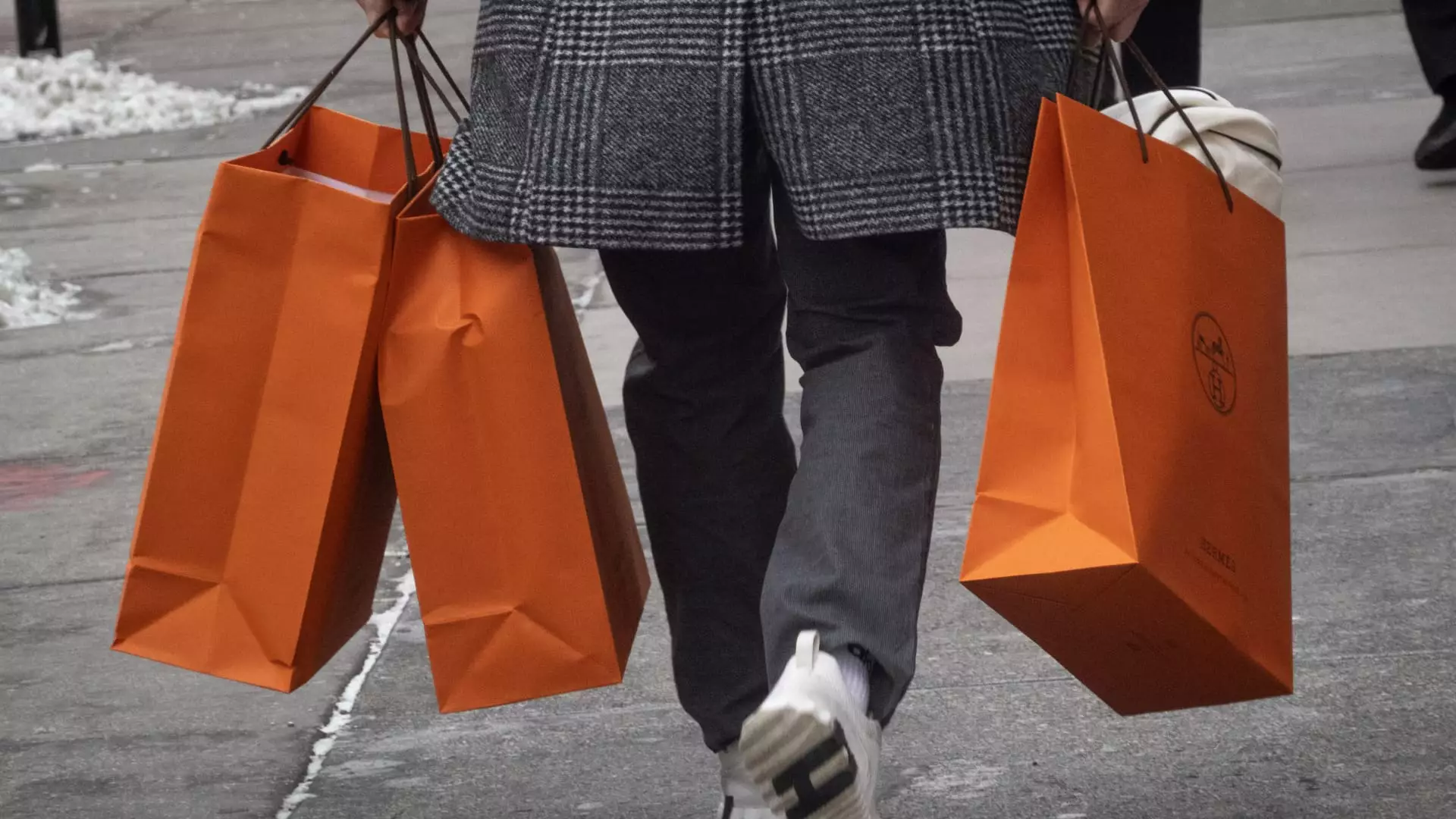As the winds of economic uncertainty sweep across the global landscape, Europe’s iconic luxury brands, once impervious to transient political tensions, now find themselves in a precarious situation. The recent imposition of U.S. tariffs has raised pertinent questions about the resilience of high-end fashion houses like LVMH, Kering, and Hermes, all of which saw their stock prices dip recently. While the immediate impacts of the tariffs may seem mild, we find ourselves standing at the brink of something far more profound. The supposed short-term benefits of the 90-day tariff pause announced by President Trump may be nothing more than a fleeting mirage, with analysts projecting a staggering 70% likelihood of a recession.
Wealthy consumers have traditionally been the bulwark against economic downturns, readily spending a premium for luxury with little concern for price fluctuations. However, as the global economy teeters on the edge of a recession due to the escalating trade war and market volatility, even these high-end clientele may soon find their wallets feeling the strain. The ostentation of luxury items, long viewed as a status symbol, could be overshadowed by an impending economic gloom, forcing brands to reevaluate pricing strategies that cater to consumer confidence that may no longer be stable.
Shifting Markets and Consumer Sentiment
Although European luxury firms generate only 15% to 30% of their sales from the U.S., that segment has become increasingly crucial for growth in recent quarters. As European brands shift focus from distressing declines in Chinese demand, a heavy reliance on the American market becomes a double-edged sword. The introduction of tariffs reaching a staggering 125% for specific imports threatens not only earnings but also consumer sentiment—a critical driver for luxury purchases.
While industry experts claim that the first order effects of tariffs are negligible, the far more impactful second and third order consequences must be acknowledged. If we examine consumer behavior, it becomes evident that wealth is not immunity to economic downturns. Even the affluent may hesitate before splurging on luxury goods when economic sentiment turns sour. As Deutsche Bank analyst Adam Cochrane articulates, a weakened economy amplifies the risk for these coveted brands, stunting the long-awaited recovery that many had anticipated following the prolonged pandemic slump.
The Illusion of Recovery
Following what appeared to be encouraging fourth-quarter results for luxury brands, analysts are now suggesting that these figures might prove to be mere outliers rather than indicative of a true market turnaround. The optimism of a rebound post-COVID may be short-lived, as Deutsche Bank has scaled back its growth expectations for the luxury sector. If past behaviors are a harbinger of future trends, then the loyalty spent on lavish purchases may dissolve rapidly as recession fears creep into even the highest echelons of consumer society.
In an environment characterized by volatility, a latent consumer apprehension has begun to simmer. U.S. luxury demand is facing a substantive threat, and brands could experience a worsening decline as consumers adjust their spending habits. If the luxury sector continues to experience stagnation, it will likely signal an end to the “fast fashion” frenzy associated with the pandemic period. Instead, consumers may pivot toward more sustainable purchasing habits, foregoing impulse luxury buys in favor of financial prudence.
Who Will Survive the Storm?
As the luxury industry prepares to weather this storm, not all brands will emerge unscathed. Analysts believe firms such as Hermes and Burberry, with their strong brand heritage and a consumer base oriented towards experience and quality, may prove to weather this economic tempest. On the other hand, companies that have expanded aggressively without solidifying their brand allegiance, such as Richemont and Moncler, might struggle significantly.
It’s no secret that the luxury retail landscape is a fickle beast, swayed not only by bottom-line calculations but by consumer sentiment at every twist and turn. The risk of a broader economic downturn raises substantial concerns for the future of the industry. Should recession predictions materialize and the market enter a corrective phase, the narrative surrounding Europe’s luxury brands will inevitably morph.
In an era marked by unpredictability, even the allure of a chic handbag or a dazzling pair of shoes may not suffice to bury the fear of financial instability. The shadows of recession loom larger, and as we watch, a wave of changes may begin to reshape not just the practices of luxury retail, but also the very philosophies that underpin it.

